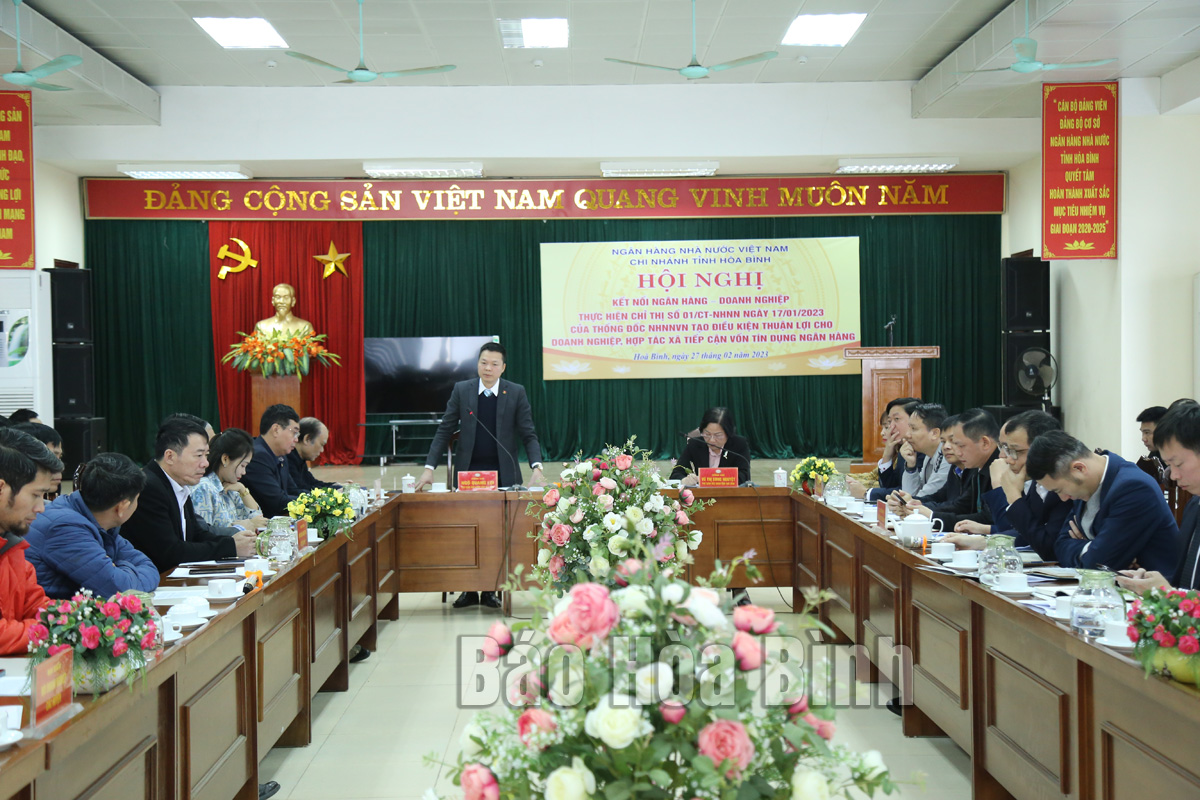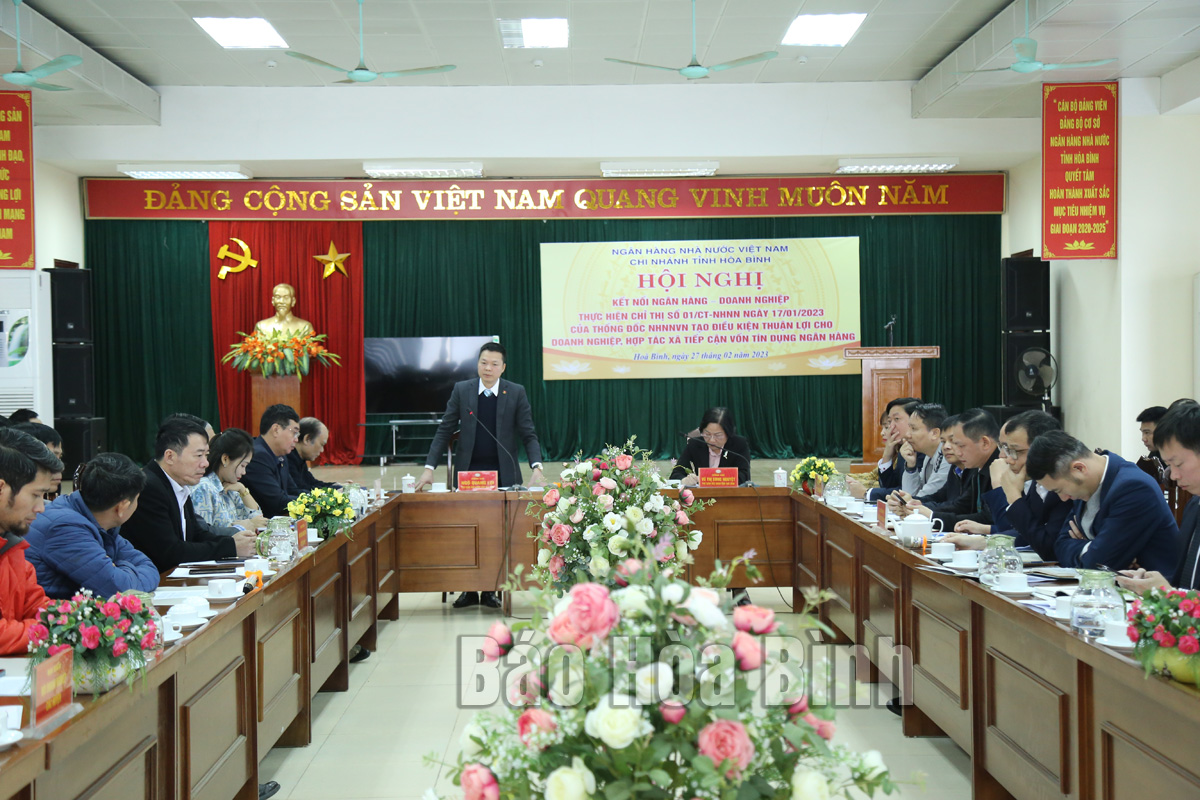



The representatives of the provincial branch of the State Bank of Vietnam were discussing with the banks and enterprises in the area.
According to the provincial branch of the State Bank of Vietnam, by January 31, 2023, the total mobilized capital in the locality reached over 40 trillion VND. The total outstanding loans to all economic sectors reached 34,220 billion VND, of which over 1,200 businesses were allowed to borrow with over 7,650 billion VND, accounting for 22.4% of the total outstanding loans; the outstanding loans for agriculture and rural areas reached 16,500 billion VND; the outstanding loans for the cooperatives were 34 billion VND; the loans for the individuals and households for production and business were over 24,000 billion VND.
In 2022, the provincial branch of the State Bank of Vietnam has implemented a program to support the interest rates of 2% according to Decree No. 31/2022/ND-CP of the Government on supporting the interest rate from the State budget for the loans of the enterprises, cooperatives and households and the Circular of the State Bank of Vietnam guiding the commercial banks to implement the support of the interest rate according to the Government's Decree, Agribank, Vietinbank, BIDV have supported the interest rates for 14 customers with the amount of 228 million VND. Vietnam Bank for Socila policies (VBSP) disbursed the preferential lending policy of 277 billion VND under the Socio-Economic Recovery and Development Program according to the Government's Resolution 11.
However, in the process of implementing the interest rate supporting the program, there are still many difficulties and obstacles in accessing the capital. They are the failure to establish the sufficient dossiers, invoices and documents as prescribed; there are no big projects in the province for the banks and the credit institutions to invest in...
At the conference, the delegates have proposed the issues that are the barriers for the enterprises to access the credit sources. The current credit interest rate is too high, which greatly affects the operation of the enterprises; increasing the power for the local bank branches in determining the credit limits for the enterprises, being close to the market reality when valuing the collaterals; the banks need to extend the loan period for the enterprises; having the preferential policies on the loans for the cooperative system in the area...
In addition, the commercial banking system needs to reduce the deposit interest rates with fair competition; For the banks, especially the banks with the state capital, the necessary large scale is facilitated in order to expand more branches in the districts, helping the enterprises to quickly access credit. Thereby, it has been contributing to promoting the credit growth, promoting production and business, contributing to the socio-economic development of the province...
In order to effectively support the enterprises and cooperatives so that they can quickly access the credit capital according to Directive No. 01, the provincial branc of State Bank of Vietnam has set out 5 key tasks in the coming time. Accordingly, it is necessary to direct the banks and the credit institutions to strictly comply with the regulations on the interest rates, promoting the capital mobilization, creating the favorable conditions for the people and the enterprises to access the bank credit, meeting the legal needs of the customers, the local people and the enterprises…
In addition, it is necessary to strengthen inspection, supervision, propaganda, coordinating with the departments, the branches and the localities to promptly handle the difficulties and problems in the implementation process; promoting the program to connect Banks - Enterprises; continuing to implement the program of 2% interest rate support under Decree No. 31/2022/ND-CP of the Government...